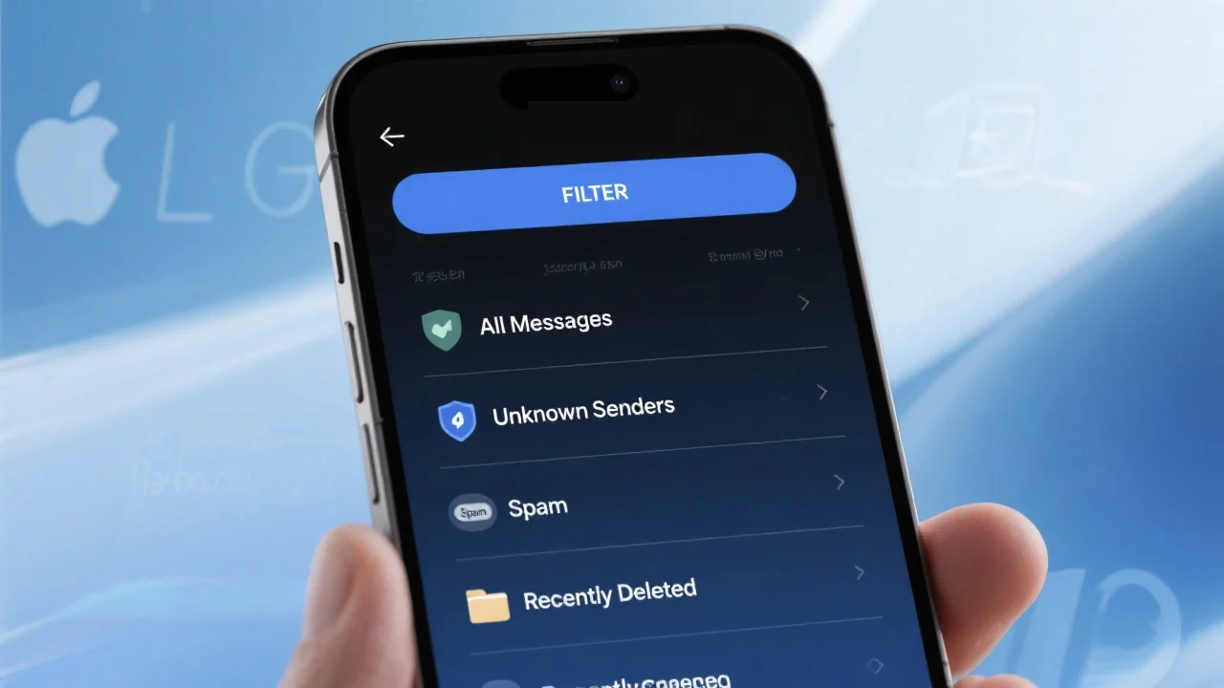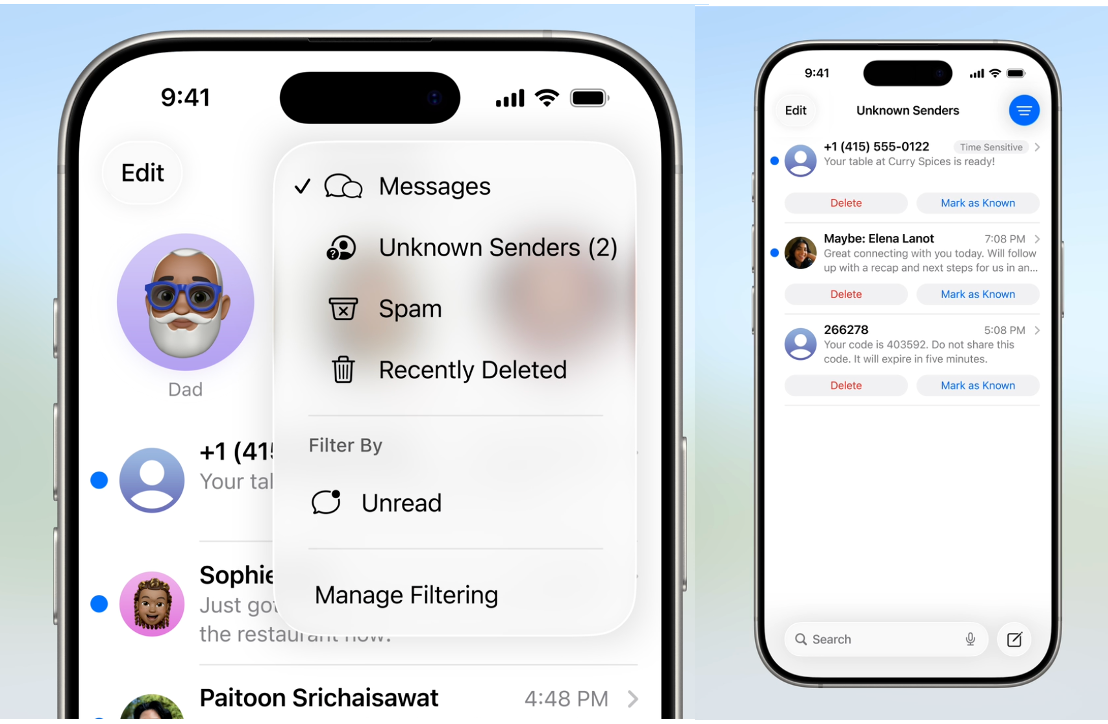Apple’s iOS 26 introduces stricter message filtering, automatically diverting unknown and spam texts into separate folders. This poses a major challenge to SMS based marketing and political campaigns. While enhancing user privacy and control, it disrupts traditional application to person messaging and urges brands to adopt consent based, multi channel strategies. MEF CEO Dario Betti discusses what this means for mobile businesses and the future of trusted messaging.
With the upcoming release of iOS 26, Apple is rolling out a major overhaul to its message filtering system—one that could have far-reaching consequences for consumers, brands, political campaigns, and the entire A2P (Application-to-Person) messaging ecosystem.

It is true that SPAM is becoming more than a nuisance in some markets, and this action could shield some users from negative experience. On the other hand, the ROI and immediacy of the SMS medium might be challenged, by placing messages from unknown numbers in a junk box, separate from the inbox.
A New Inbox for the SPAM Age
At its core, Apple’s iOS 26 update is about giving users more control—and more peace of mind. The new Messages app introduces a prominent filter button, allowing users to instantly sort their inbox into four categories: All Messages, Unknown Senders, Spam, and Recently Deleted. The change? Currently, by default messages from numbers not in a user’s contact list are now automatically routed to an “Unknown Senders” folder, with no notification to the recipient. Suspected spam, meanwhile, is moved to a dedicated Spam folder, also silenced by default. People would have to hit the filter button to access the subfolders.
The messaging setting screen allows turning on or off the “Screen Unknown Senders” toggle, just like “Filter Spam”. It is still possible that by the time the software is finally released the default options could change.

Apple’s iOS 26 update marks a turning point for mobile messaging. For users, it’s a welcome shield against spam and unwanted noise. For the A2P industry, it’s a call to raise standards, embrace transparency, and put user consent at the heart of every campaign.”
For the average iPhone user, this promises a cleaner, less cluttered experience. No more constant pings from unknown numbers. No more sifting through a sea of unsolicited offers, scams, or political appeals. As Apple’s Darin Adler put it at WWDC, users now have “total control over who appears in your conversation list.”
But for those who rely on messaging to reach audiences—especially at scale—this is a game-changer.
Political Campaigns Sound the Alarm
Perhaps nowhere is the impact of Apple’s new filtering felt more acutely than in the world of political campaigning. According to a memo from the National Republican Senatorial Committee (NRSC), the new system could cost GOP campaigns as much as $25 million in direct payments, and a global total $500 million in lost donations and outreach. With iPhones accounting for roughly 60% of US smartphones, and 70% of small-dollar donations coming via text, the stakes are enormous.
Campaigns from both sides of the aisle have long relied on mass texting—not just for fundraising, but for mobilizing voters and sharing critical information. Now, with unsolicited texts likely to be filtered out of sight, the traditional playbook is under threat. As one NRSC spokesperson warned, “That change has profound implications for our ability to fundraise, mobilize voters, and run digital campaigns,”
Apple, for its part, insists that time-sensitive messages—like verification codes and delivery alerts—will still make it through. And users can always “Mark as Known” to whitelist legitimate senders. But the message is clear: the era of unchecked, unsolicited mass texting might be coming to an end.
How Does Android Stack Up?
While Apple’s approach is making headlines, Android users have long enjoyed a patchwork of spam-fighting tools. Google Messages, the default app on most Android devices, offers a “Spam protection” toggle that uses AI to flag and divert junk texts. Samsung’s own messaging app includes robust filtering and blocking options, and major carriers like AT&T, Verizon, and T-Mobile all provide network-level spam controls.
The key difference? Android’s solutions are fragmented—varying by device, app, and carrier—while Apple’s update delivers a uniform, OS-level experience to every iPhone running iOS 26.
The Ripple Effect for A2P and Business Messaging
For brands, aggregators, and CPaaS providers, the implications are profound. Deliverability is no longer just about technical uptime or throughput—it’s about trust, consent, and reputation. Messages from unknown or unregistered senders risk being filtered out of sight, never to be seen by their intended recipients.
This shift will accelerate several trends already underway:
- Channel Diversification: Enterprises may increasingly turn to RCS, WhatsApp Business, or in-app push notifications, where delivery is more predictable and interactive.
- Regulatory Scrutiny: As platforms take a more active role in filtering, expect renewed debate over the balance between user protection and open communication—especially in the political arena.
- User Trust: For consumers, a cleaner inbox could restore faith in SMS as a channel for critical alerts, banking, healthcare, and logistics.
Apple’s iOS 26 update marks a turning point for mobile messaging. For users, it’s a welcome shield against spam and unwanted noise. For the A2P industry, it’s a call to raise standards, embrace transparency, and put user consent at the heart of every campaign.
As the mobile ecosystem adapts, one thing is certain: the days of “send and hope” are over. The future belongs to those who earn—and keep—the trust of their audience.
For more insights on the evolving world of mobile messaging, become a member of the Mobile Ecosystem Forum, join our events, insight calls and exclusive information services at info@mobileecosystemforum.com.





